| Early Spring Date: | April 15 |
| Late Spring Date: | May 31 |
| Best Dates to See in Spring: | May 1-24 |
Spring: Common Yellowthroats nest in Northern Virginia, but not at Monticello Park. They prefer habitats in marshes and near rivers, but a good number visit Monticello each spring. The best time to see them is during the second week in May.
Fall: Common Yellowthroats begin to migrate south in August. They are most frequently seen at Monticello from the second week in September through the end of the month.
Where to See Them in the Park
Common Yellowthroats skulk low in the bushes, but not so deeply that you cannot find them. They are quite vocal, and they often go into the stream to bathe and drink.
Physical Description
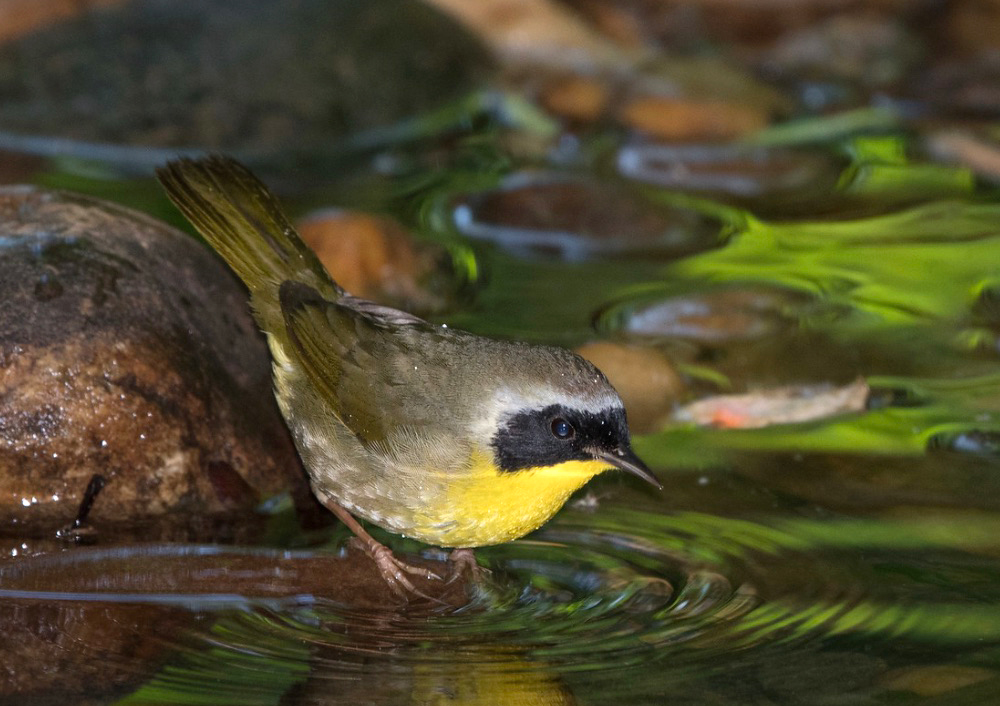
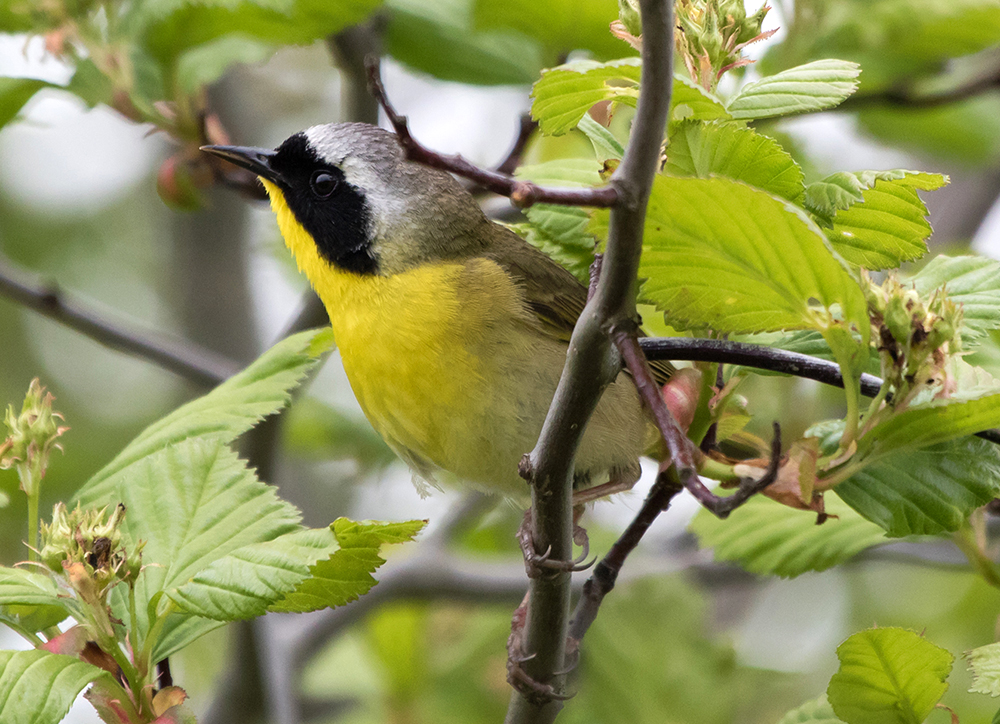
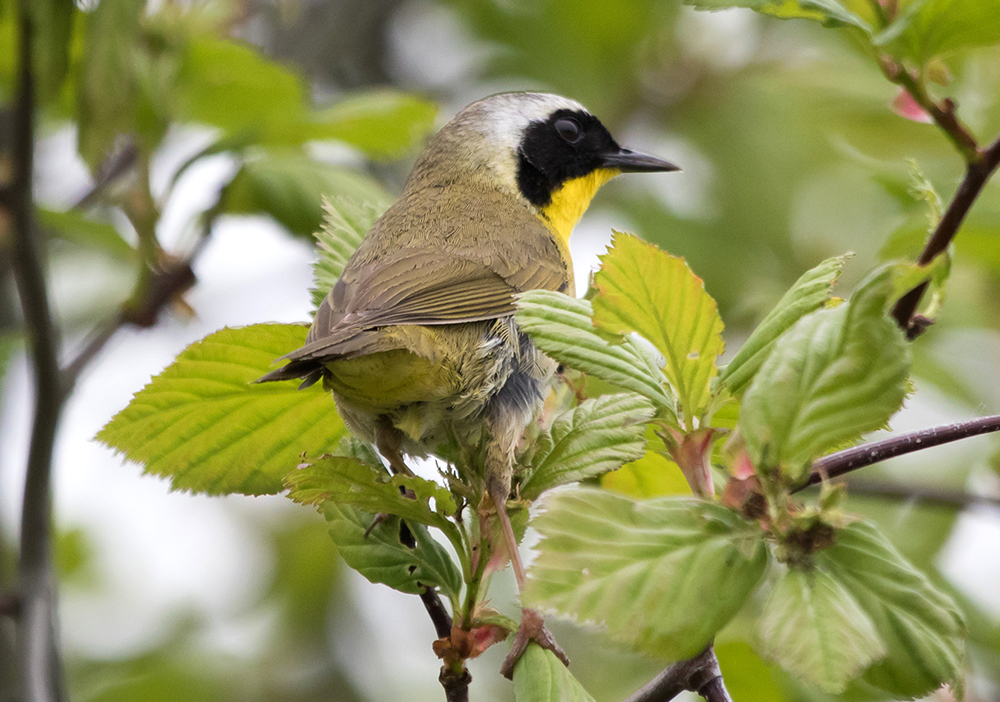
The male Common Yellowthroat is easy to identify because of his black "bandit's mask", with a thick gray stripe arcing over it. As the name would indicate, he has a yellow throat. His back is olive, and he has yellow edges on his wing feathers and tail. Immature males have a trace of a black mask with a gray stripe over it, but these fieldmarks are not well defined.
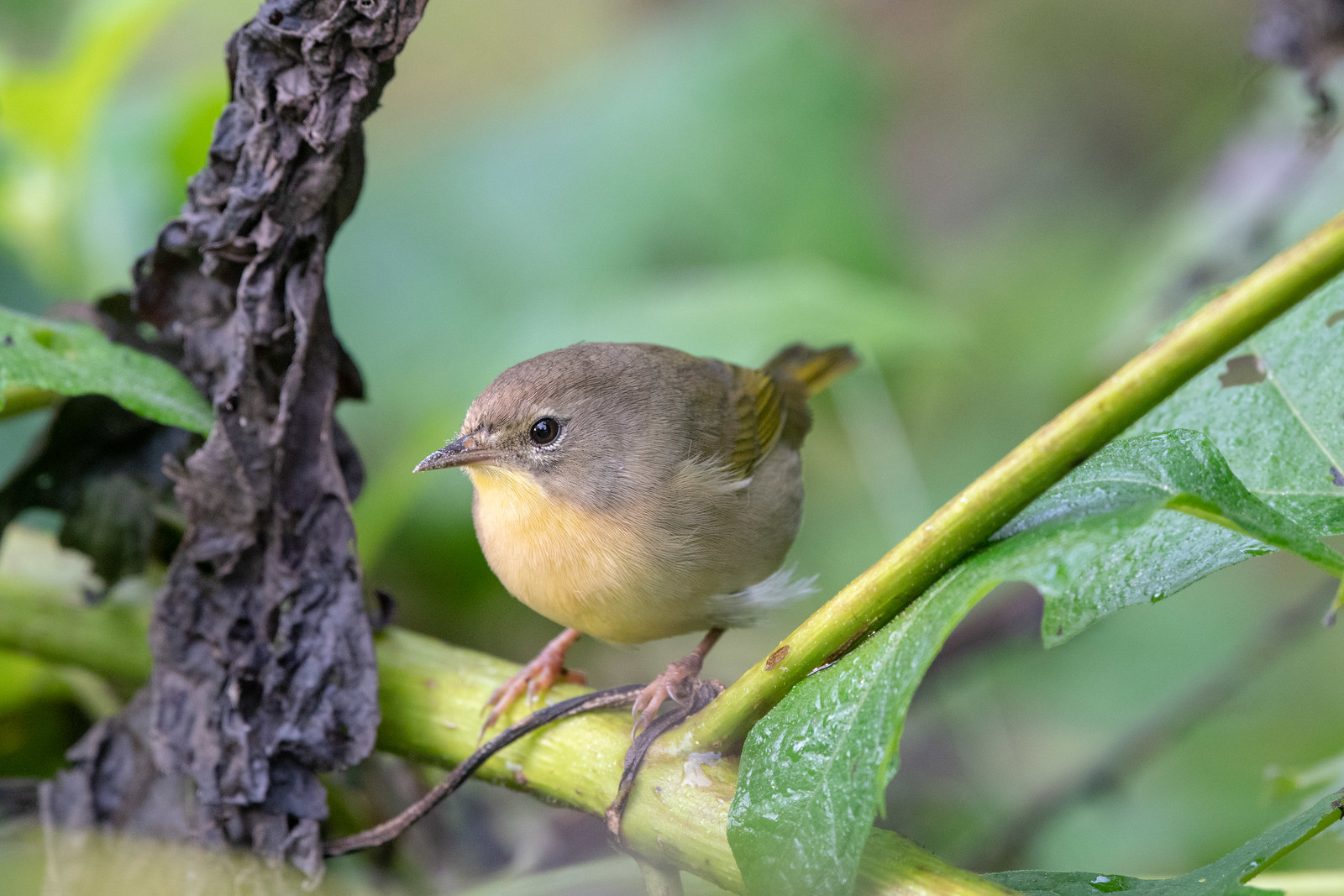
Female Common Yellowthroats can create significant identification challenges. They lack the black mask, and they have a broken white eyering. The yellow feather edges on the tail and wings, which did not seem prominent on the male, become an important fieldmark when trying to identify a female. The yellow undertail feathers also can be helpful. As with the males, female Common Yellowthroats often go into the stream to bathe.
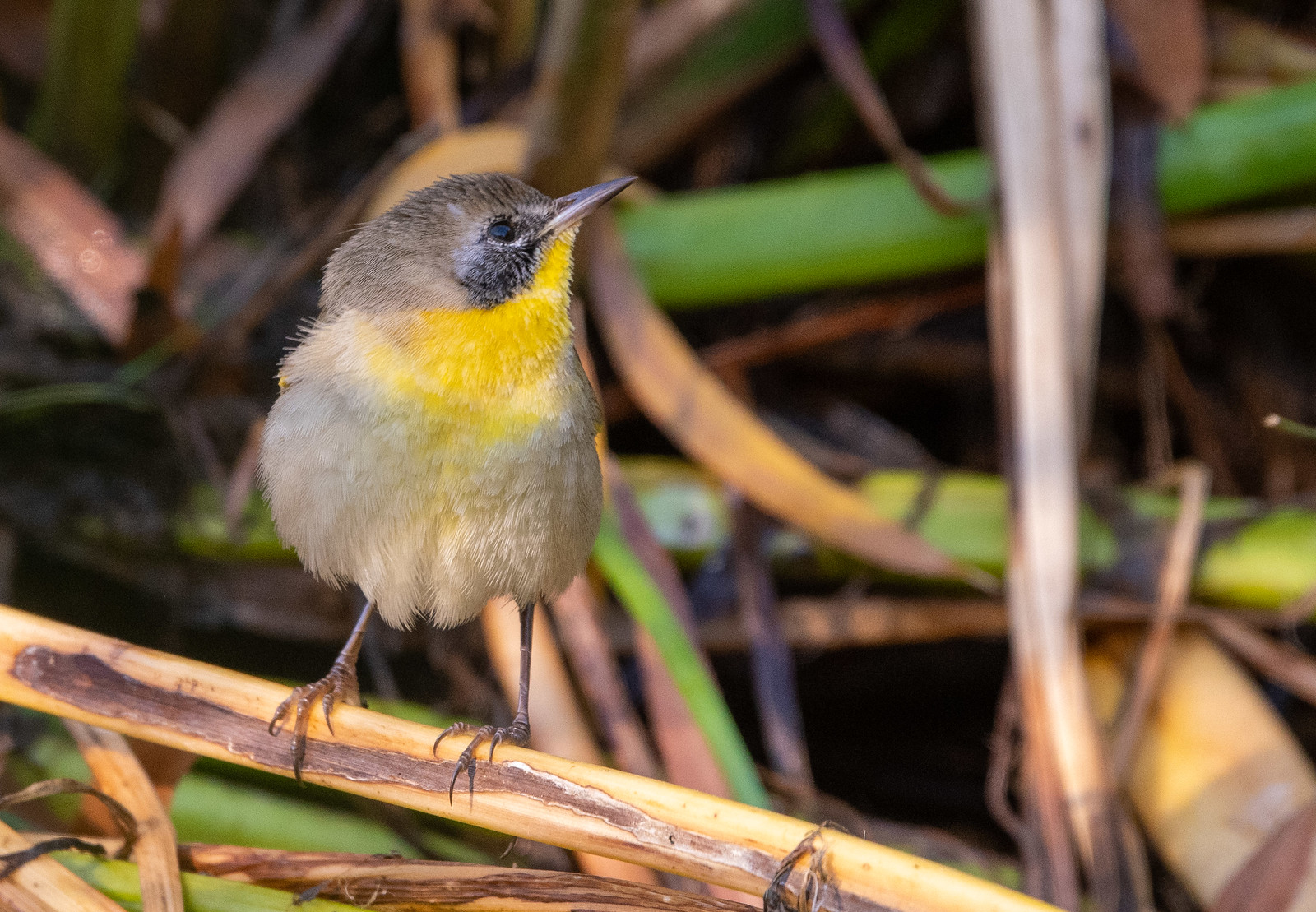
Fall: Adult male yellowthroats look very similar in both spring and fall, as do adult females. Fall first-year males have a trace of a mask.
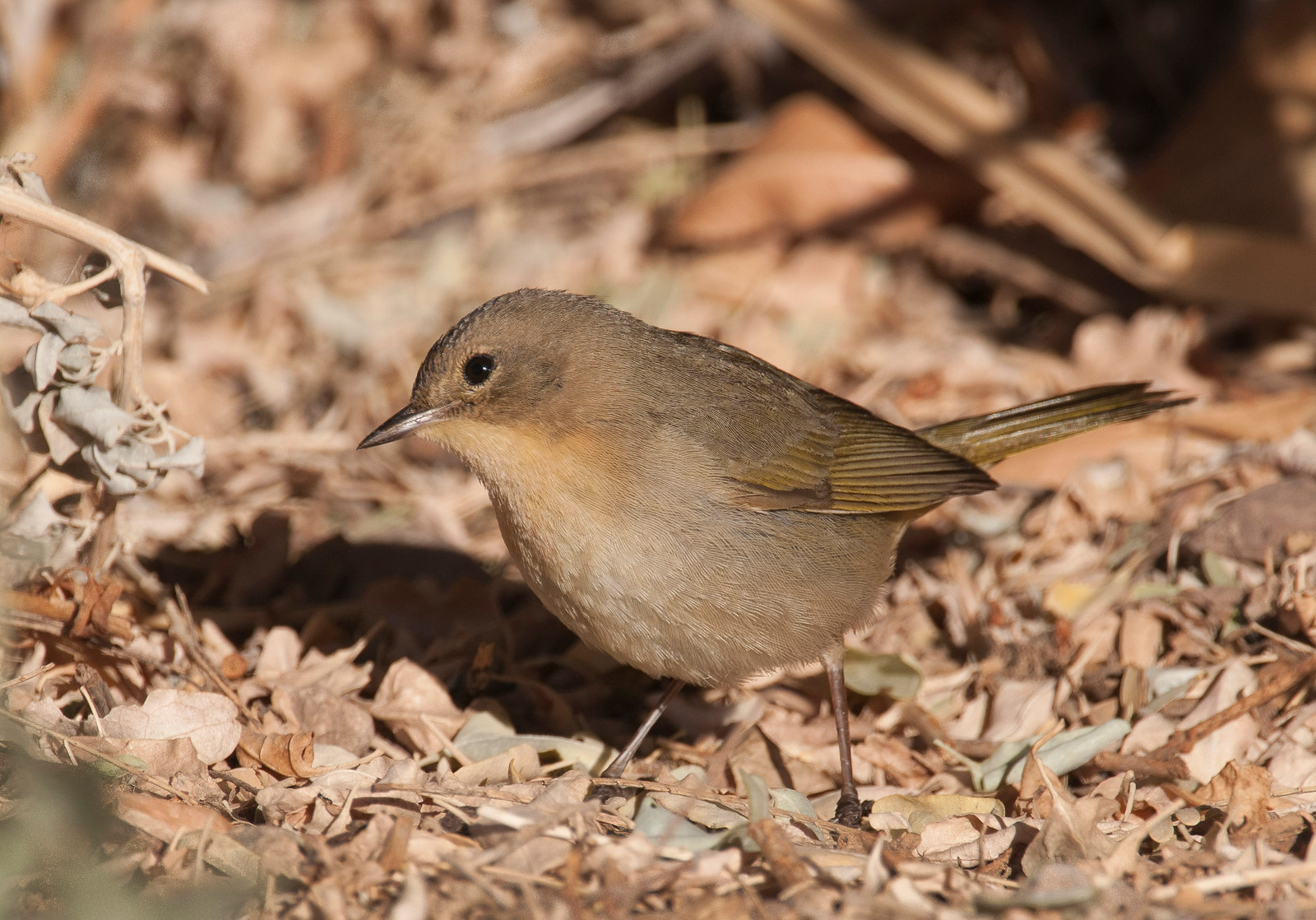
Fall first-year females are very brown, but they still have yellow edges on some of their feathers.
Vocalizations
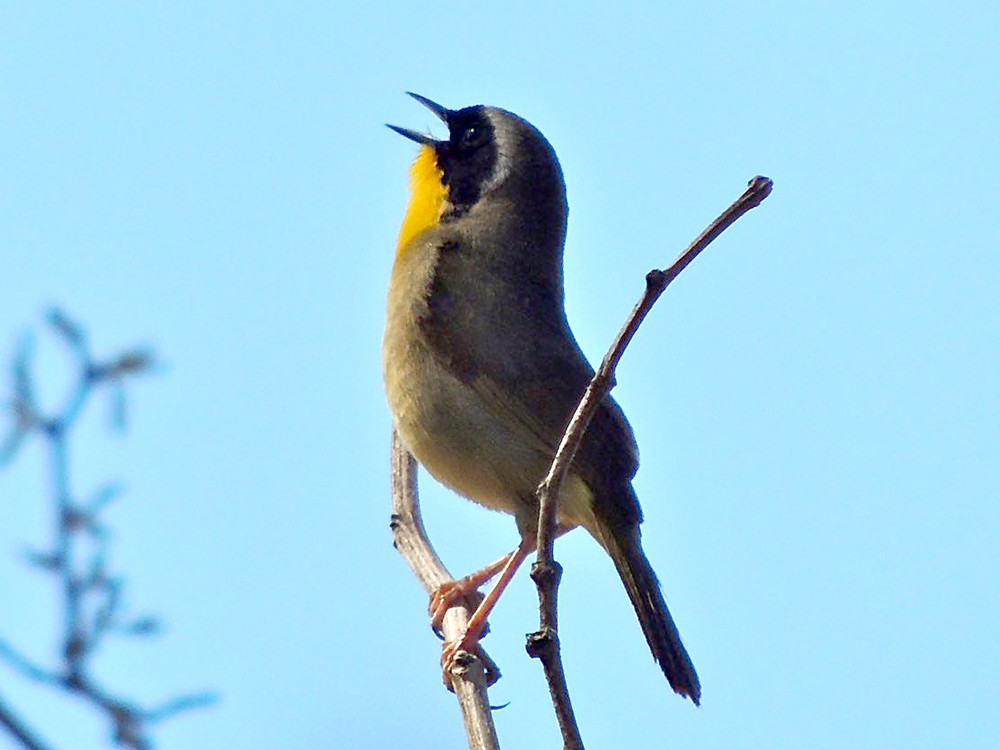
Common Yellowthroats sing a broad range of songs. One of the best known is witchety-witchety-witchety. The yellowthroat also utters a dry, raspy call note.
Hear the vocalizations of the Common Yellowthroat.
Notes
The Common Yellowthroat used to be called the Black-masked Ground Warbler. A yellowthroat was one of the first specimens from the New World to be catalogued by Carl Linnaeus, who formalized the system of binomial nomenclature for life forms. The specimen came from Maryland, which is why the species used to be called the Maryland Yellowthroat. The newsletter of the Maryland Ornithological Society is called the Maryland Yellowthroat. There are six other species of yellowthroats in the same genus, but none regularly occur in the United States.
Origin of Names
Common Names: Common from its abundance. Yellowthroat from the plumage.
Genus Name: Geothlypis means a small ground bird.
Species Name: Trichas means thrush.
Common Yellowthroat video footage
Return to the Index
